Ali Sharifara
Prediction of Sewer Pipe Deterioration Using Random Forest Classification
Dec 09, 2019
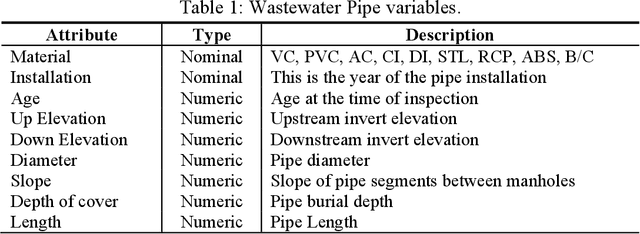


Abstract:Wastewater infrastructure systems deteriorate over time due to a combination of physical and chemical factors. Failure of this significant infrastructure could affect important social, environmental, and economic impacts. Furthermore, recognizing the optimized timeline for inspection of sewer pipelines are challenging tasks for the utility managers and other authorities. Regular examination of sewer networks is not cost-effective due to limited time and high cost of assessment technologies and a large inventory of pipes. To avoid such obstacles, various researchers endeavored to improve infrastructure condition assessment methodologies to maintain sewer pipe systems at the desired condition. Sewer condition prediction models are developed to provide a framework to forecast the future condition of pipes to schedule inspection frequencies. The main goal of this study is to develop a predictive model for wastewater pipes using random forest classification. Predictive models can effectively predict sewer pipe condition and can increase the certainty level of the predictive results and decrease uncertainty in the current condition of wastewater pipes. The developed random forest classification model has achieved a stratified test set false negative rate, the false positive rate, and an excellent area under the ROC curve of 0.81 in a case study application for the City of LA, California. An area under the ROC curve > 0.80 indicates the developed model is an "excellent" choice for predicting the condition of individual pipes in a sewer network. The deterioration models can be used in the industry to improve the inspection timeline and maintenance planning.
Artificial Neural Networks and Adaptive Neuro-fuzzy Models for Prediction of Remaining Useful Life
Aug 28, 2019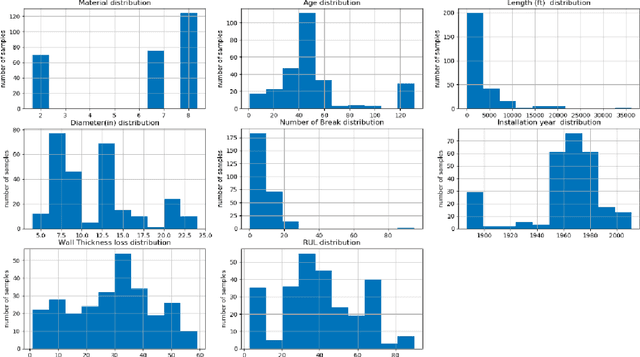
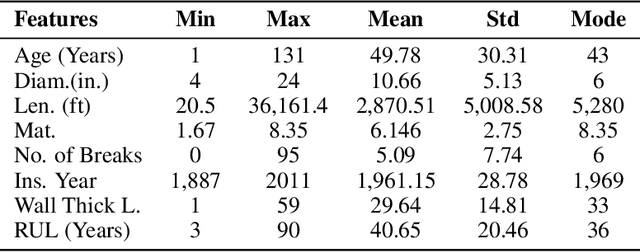
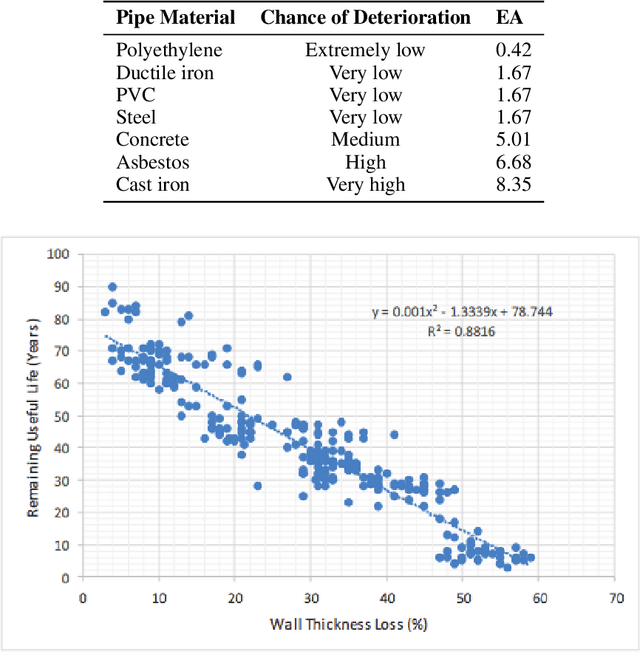

Abstract:The U.S. water distribution system contains thousands of miles of pipes constructed from different materials, and of various sizes, and age. These pipes suffer from physical, environmental, structural and operational stresses, causing deterioration which eventually leads to their failure. Pipe deterioration results in increased break rates, reduced hydraulic capacity, and detrimental impacts on water quality. Therefore, it is crucial to use accurate models to forecast deterioration rates along with estimating the remaining useful life of the pipes to implement essential interference plans in order to prevent catastrophic failures. This paper discusses a computational model that forecasts the RUL of water pipes by applying Artificial Neural Networks (ANNs) as well as Adaptive Neural Fuzzy Inference System (ANFIS). These models are trained and tested acquired field data to identify the significant parameters that impact the prediction of RUL. It is concluded that, on average, with approximately 10\% of wall thickness loss in existing cast iron, ductile iron, asbestos-cement, and steel water pipes, the reduction of the remaining useful life is approximately 50%
Improving the Accuracy of the CogniLearn System for Cognitive Behavior Assessment
Mar 25, 2017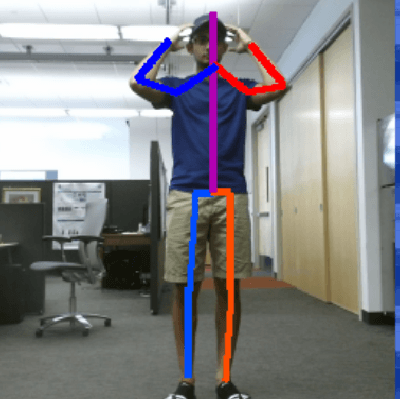

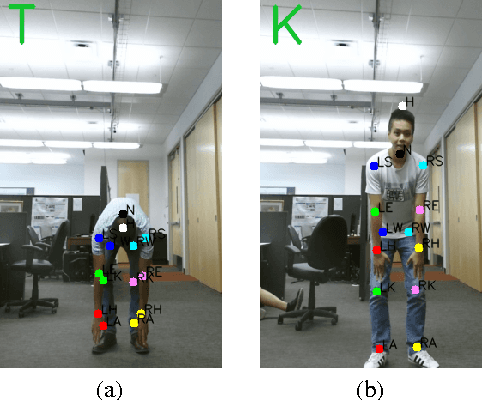

Abstract:HTKS is a game-like cognitive assessment method, designed for children between four and eight years of age. During the HTKS assessment, a child responds to a sequence of requests, such as "touch your head" or "touch your toes". The cognitive challenge stems from the fact that the children are instructed to interpret these requests not literally, but by touching a different body part than the one stated. In prior work, we have developed the CogniLearn system, that captures data from subjects performing the HTKS game, and analyzes the motion of the subjects. In this paper we propose some specific improvements that make the motion analysis module more accurate. As a result of these improvements, the accuracy in recognizing cases where subjects touch their toes has gone from 76.46% in our previous work to 97.19% in this paper.
Enhanced Facial Recognition Framework based on Skin Tone and False Alarm Rejection
Feb 14, 2017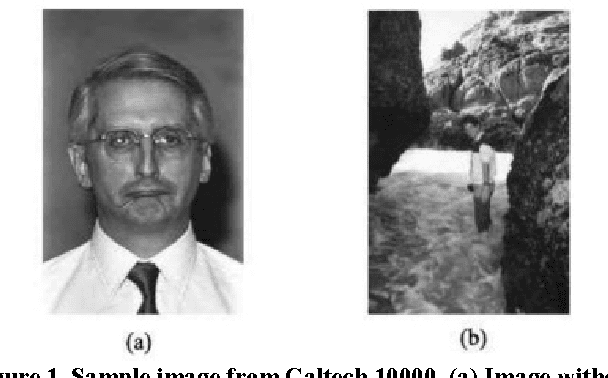
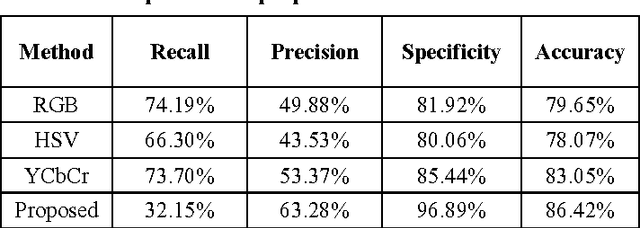


Abstract:Face detection is one of the challenging tasks in computer vision. Human face detection plays an essential role in the first stage of face processing applications such as face recognition, face tracking, image database management, etc. In these applications, face objects often come from an inconsequential part of images that contain variations, namely different illumination, poses, and occlusion. These variations can decrease face detection rate noticeably. Most existing face detection approaches are not accurate, as they have not been able to resolve unstructured images due to large appearance variations and can only detect human faces under one particular variation. Existing frameworks of face detection need enhancements to detect human faces under the stated variations to improve detection rate and reduce detection time. In this study, an enhanced face detection framework is proposed to improve detection rate based on skin color and provide a validation process. A preliminary segmentation of the input images based on skin color can significantly reduce search space and accelerate the process of human face detection. The primary detection is based on Haar-like features and the Adaboost algorithm. A validation process is introduced to reject non-face objects, which might occur during the face detection process. The validation process is based on two-stage Extended Local Binary Patterns. The experimental results on the CMU-MIT and Caltech 10000 datasets over a wide range of facial variations in different colors, positions, scales, and lighting conditions indicated a successful face detection rate.
 Add to Chrome
Add to Chrome Add to Firefox
Add to Firefox Add to Edge
Add to Edge